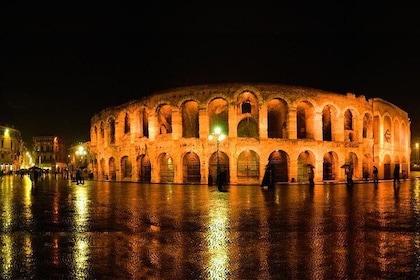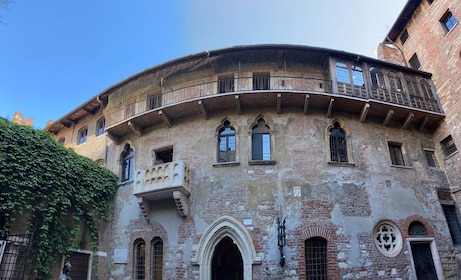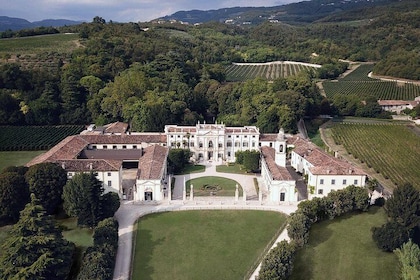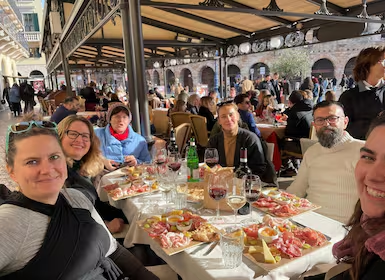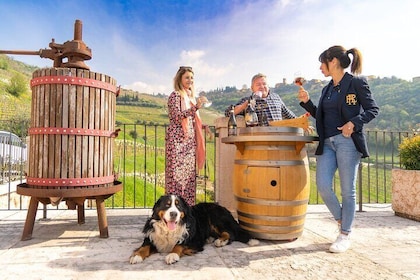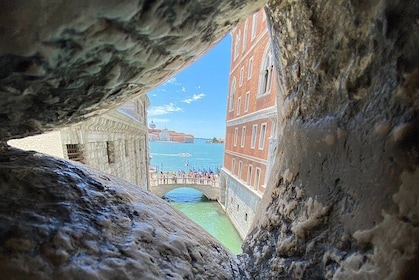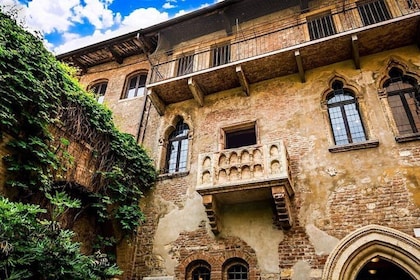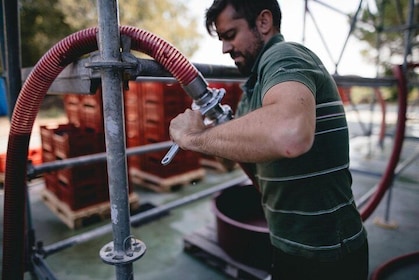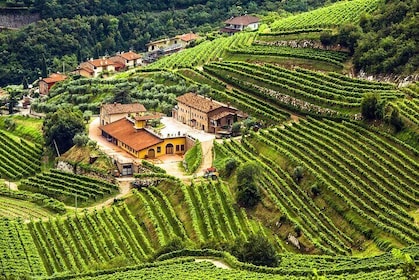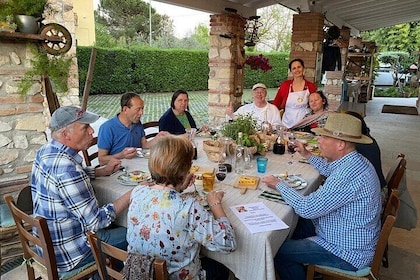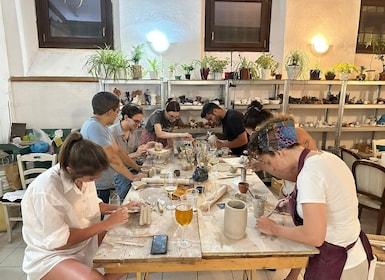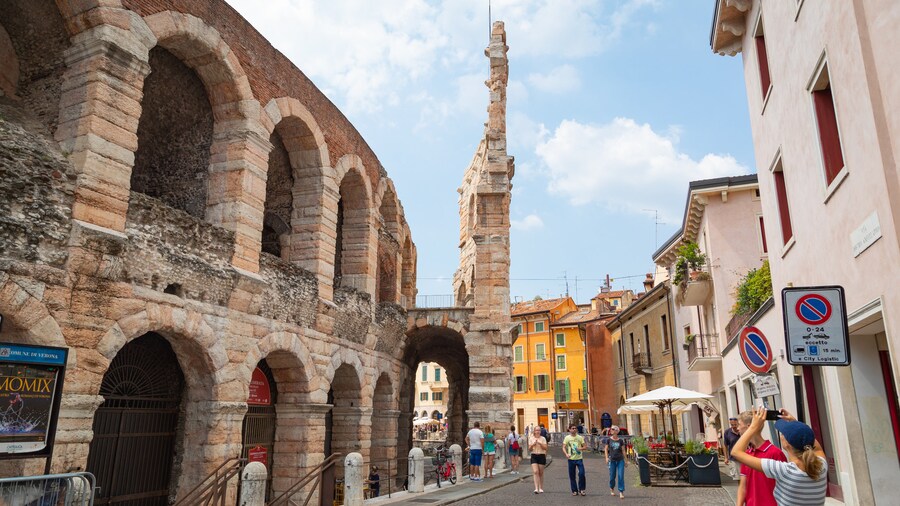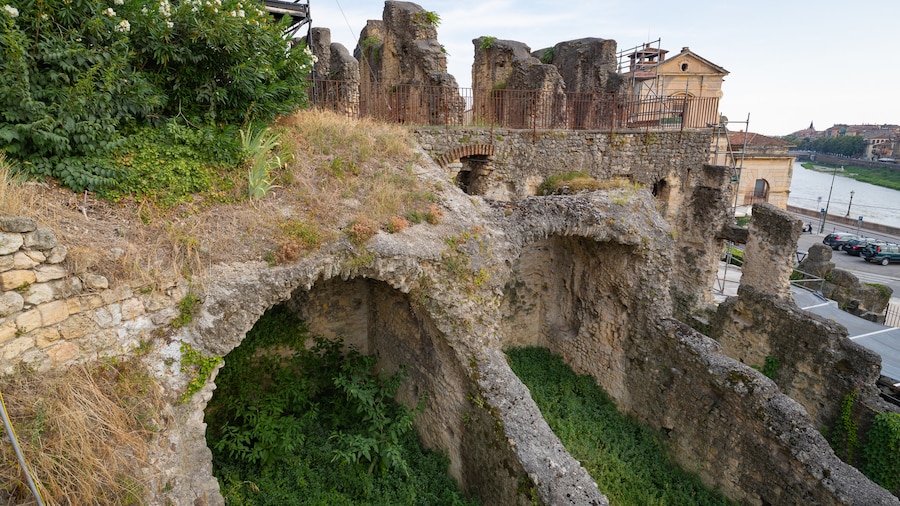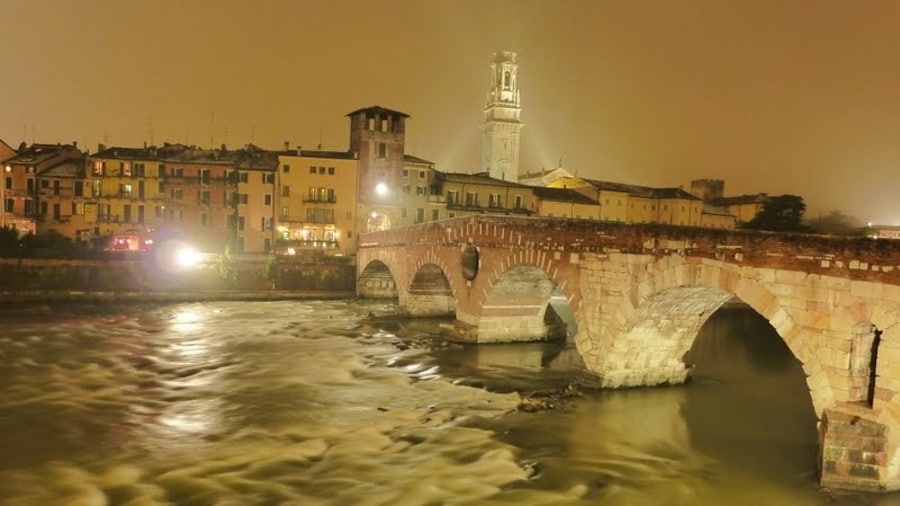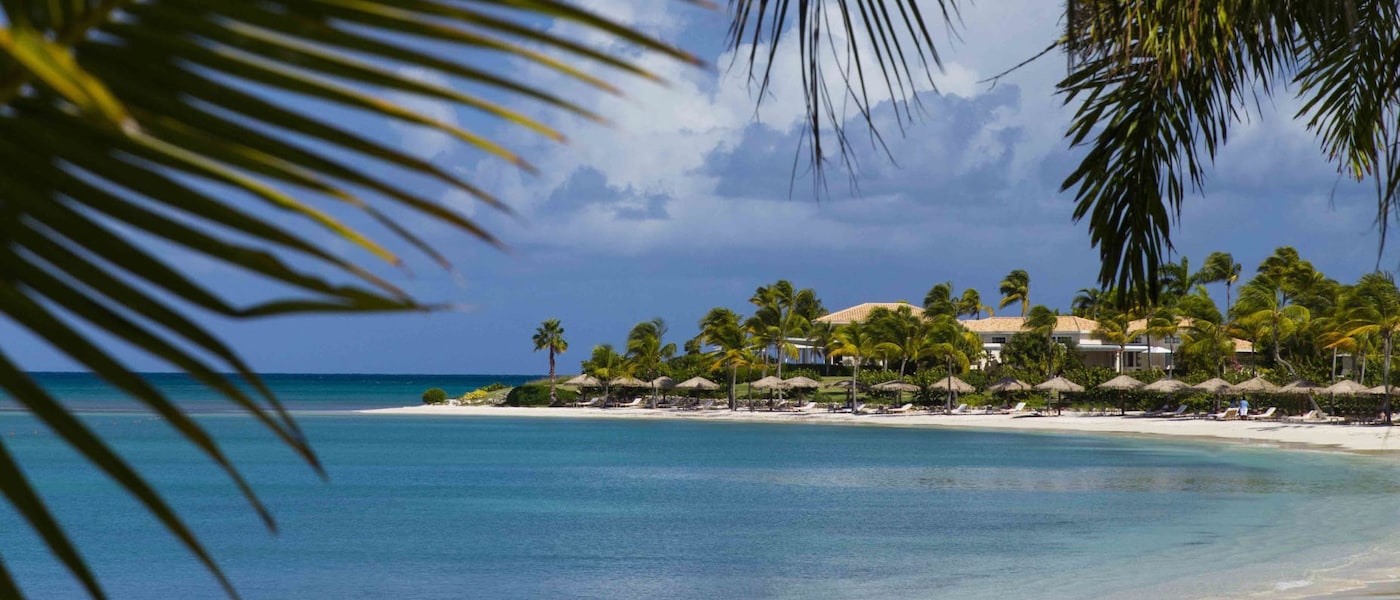St. Peter’s Castle (Castel San Pietro) is a former military stronghold perched on a hill above the Adige River. Climb a series of staircases to the castle and enjoy the panorama over the rooftops of Verona’s historic center. Spot architectural masterpieces built by the Scaliger family, who ruled Verona in the 13th and 14th centuries. As you gaze out across the cityscape you’ll understand why Verona has been called the “City of Love,” and why it inspired Shakespeare to set two of his plays here.
St. Peter’s Hill (Colle San Pietro), on which the castle stands, is a cradle of civilization in Verona, housing the ruins of settlements from the 7th century B.C. A fortified battlement first appeared in the early medieval era. Gian Galeazzo Visconti, the first Duke of Milan, then established a fortress in the 14th century. Today’s building dates to the 1800s and served as a military base for Austrian soldiers.
The fortress is closed to the public but it’s worth coming for the views. As you look down from the castle, immediately in front of you is the Città Antica, Verona’s historic quarter, the setting for Shakespeare’s Romeo and Juliet and The Two Gentlemen of Verona. To the left of the old town is Piazza Isolo. This was once an island separated by an arm of the Adige where merchants traded goods and women washed clothes on the riverbanks.
Spot the city’s network of Roman roads, the mighty church spires and soaring towers such as Lamberti Tower. Bring a pair of binoculars and you’ll be able to spot the Castelvecchio, Ponte Scaligeri bridge and Verona Arena.
Reach the castle by following the staircases that lead up from the northern side of Ponte Pietra bridge. Drivers can park for free in the square.
You can visit St. Peter’s Castle at any time of the day. On your return, stop at the Roman Theatre, the host of concerts and plays during the summer months. Above here is the Verona Archaeological Museum, which displays artifacts related to Verona’s Roman history in the ruins of a former monastery.








